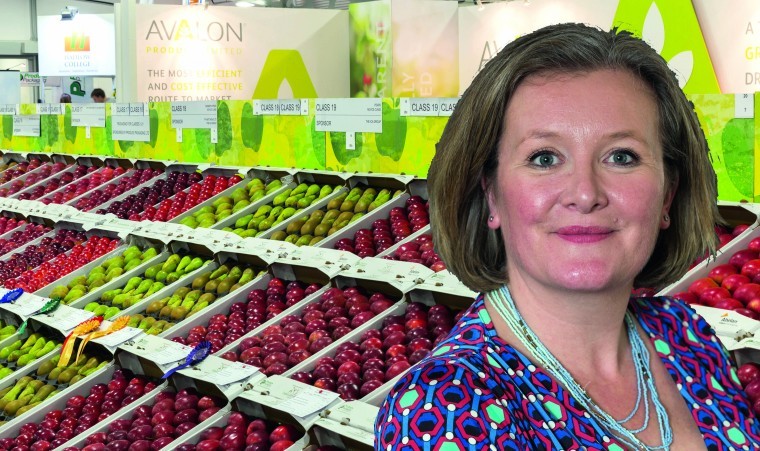The storm clouds may have threatened the Helios orchard walk last month, but it was a faultless demonstration of what good partnerships and a forward vision can really deliver.
The Helios orchards seek to explore the potential of different orchard structures to utilise more light to increase yields and quality (Helios being the god of the sun in Greek mythology). In Kent the orchard is hosted by Tom Hulme at Hoaden Court. It is a beautiful set of trial plots, well maintained by the Hoaden Court team, with specialist pruning and monitoring being undertaken by Hutchinsons agronomists Bob Little and Ivan Valesco.
There are six planting configurations and rootstocks under trial, the results from which will become more interesting as they mature. Of more immediate interest were presentations about the technology being developed with the same objective – to increase yield and quality.
At the first technical stop Nick Strelczuk spoke about Terramap. The system can map 21 soil parameters at a resolution of 800 points per hectare. The sensor is mounted on a lightweight vehicle such as a quad bike and measures the natural radioactive decay of four isotopes, from which the soil map is derived. Importantly, it’s not just mineral content that is measured and mapped but also organic carbon content, this organic matter being crucial for soil health.
At the next stop Rob Saunders outlined the POD project (Precision Orchard Dosing – an Innovate UK project managed by Rob, and partnered with NIAB EMR, Outfield, The Acclaimed Software Company, Plumford Farm and Worldwide Fruit). We all know that even the best orchards can be variable; the same rate of thinner or growth regulator applied to the whole orchard will over-dose some trees and under-dose others. Orchard performance could be improved, and spray use optimised, by treating trees as individuals.
How do you treat a tree as an individual? Initially, a LIDAR scan of the trees, then a UAV scan of the orchard to map blossom intensity and AI to interpret the images, feeding into an algorithm to create a prescription map which is delivered through a variable rate sprayer using GPS.
Next Nigel Kitney explained his RED-APPLE project – remote sensing and decision support for apple tree precision management and global traceability (delivered using a grant from the Newton Agri-tech joint fund). This project centres around using hyperspectral cameras to spot pest disease remotely in orchards, before they are visible to the human eye.
Scab and mildew are the starting point, with the aim of producing an early warning system, aiding spray programme development. Also as part of this project, a novel approach to spore trapping using match sticks (don’t ask) is being evaluated, aimed at enhancing the accuracy of disease modelling.
Finally, Rob and Nigel described IRIS (Improving Resilience In Scab control), its objective being to make scab fungicide programmes more resilient. UK dessert varieties are annually challenged by scab issues, with our climate getting warmer and wetter, fungicide options reducing and the new product pipeline limited.
Product approvals restrict the number and frequency of applications and several fungicides are within the same FRAC groups, further restricting applications. Protection is often needed every seven to 10 days (definitely in the season we are enduring) and there is the potential to run out of permitted applications before the season is over.
Bio-stimulants improve the ability of trees to withstand disease and fill the ‘gaps’ in programmes by triggering systemic acquired resistance (SAR). This can take time to become activated but reduced susceptibility (though not immunity) is possible.
The evaluation plots have been replicated in a commercial orchard; robust protection applied from bud burst, bio-stimulants then deployed and support from protectant fungicides only deployed when RIMpro predicts infection pressure above a certain threshold. It’s going to be really interesting to see the data from this season, which has got to be the most pressurised test they could have imagined.




